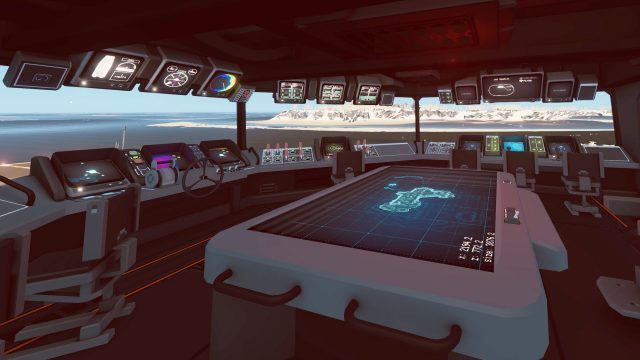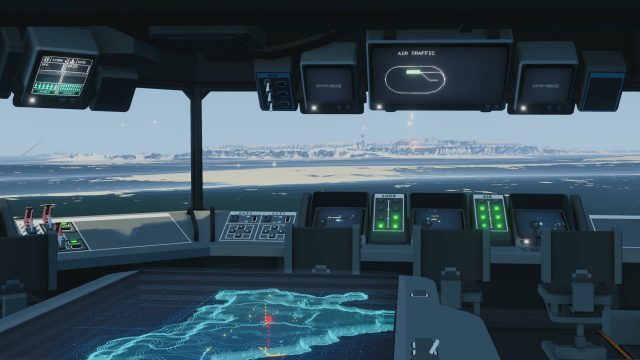Carrier Command 2 launched earlier this month alongside a separate version including full VR support. While the non-VR version of the game sits at a ‘Mostly Positive’ 75% user rating, the VR version quickly tanked to a 27% ‘Mostly Negative’ rating. A desire to cram VR into the game with limited testing and a lack of feedback from experienced VR players is the root cause. While developer Geometa is working hard to deliver fixes, this avoidable stumble right out of the gate hampers the odds of success for the VR version.
User reviews of Carrier Command 2 VR are in the gutter just one week after the game launched. The core issue, however, isn’t that VR isn’t a good fit for the game, but that the developer simply didn’t take their time with the implementation.
We suspected as much when the VR version was announced just two weeks before the game was set to launch, and after the demo period for the non-VR version had passed.
Developer Geometa admitted that VR support wasn’t originally part of its development plan, but—prompted by player requests—felt it would be easy to drop VR into place considering the ‘hands-on’ design of the non-VR version where players control the entire game from the bridge of an aircraft carrier.


“While VR was not originally in our roadmap, the literalism of the diegetic interfaces within the game has made it very easy to introduce VR to Carrier Command—this is the same game, with the same balance and same mechanics!” the studio wrote ahead of launch.
And to be fair, the game does look like it could be a good fit for VR. The issues that quickly earned it a 27% ‘Mostly Negative’ rating from users are overwhelmingly about technical missteps when it comes to VR, and much less about the content of the game itself.
It’s clear that a lack of user testing across the range of PC VR hardware and players is to blame. And let’s be honest—it’s far from easy for a small developer to test with every headset out there. But to give your VR game its best chance of success, you’ve got to find a way to get that crucial, early feedback.
It took Geometa one day… one single day after the game’s launch to gather feedback from VR players and come up with this laundry list of items that needed fixing in Carrier Command 2 VR:
- We will add a VR settings section for specific VR options.
- We will add continuous movement / locomotion movement mode options.
- We will add an option to not tilt or offset the camera when interacting with a screen.
- We will add a motion smoothing option.
- We will add controller binding information to tell players what the controller bindings are for their controller type.
- We will add options for selecting the position in which the tablet appears.
- We will add a VR scale slider to adjust the world scale.
- We will investigate improving gimbal camera interactions.
- We will investigate adding grab / touch interactions for wheel / throttle / switches.
- We will investigate interacting with screens without having to enter a seat.
- We will fix the issue pasting invite codes.
- We will fix the issue joining non-vr multiplayer games.
- We will fix the tutorial issue.
- We will fix the orientation issue for on-screen labels.
- We will fix the rendering issue when changing the VR render scale in SteamVR settings.
- We will fix subtitles rendering in a narrow column.
And to the studio’s credit, it has acted on this feedback quickly. Within a week of launch two patches have been released which addressed 10 of the above 16 items the studio said it would fix. More improvements are on the way.
Serious credit to the studio for their quick work. But it pains me (and I’m sure them too) to know that the game got battered with bad reviews right out of the gate due to these relatively easy to fix technical issues. That red ‘Mostly Negative’ text is like a scarlet letter that can scare away plenty of curious customers.
With the fixes deployed so far the studio is steadily climbing out of the hole it dug, but it’s going to be an uphill battle.
Not the First and Not the Last
Carrier Command 2 VR is far from the first VR game to launch with VR-related technical issues that could have been fixed ahead of launch to spare the game from getting slammed with early negative reviews.
VR shooter Larcenauts is another recent example. While the game launched pretty much flawlessly on Quest and Oculus PC, it was completely broken for non-Oculus headsets on Steam right out of the gate. The studio didn’t clearly communicate that non-Oculus headsets wouldn’t be supported at launch, and it got blasted with reviews from understandably confused customers who bought the game and couldn’t play it.
While the game’s most recent reviews are ‘Mostly Positive’ at 72%, the overall reviews are clearly stained by the launch issues, sitting at a ‘Mixed’ 66%.
Even big studios with serious QA resources aren’t immune. Industry heavyweight Respawn Entertainment launched Medal of Honor: Above and Beyond back in December, 2020. It was the first Oculus-funded title to launch on Steam, and it too got battered by early negative reviews.
While the issues weren’t only technical in nature, many of them were the kind of thing that you’d probably uncover easily by testing the game with just a handful of experience VR players ahead of launch.
Basic options like smooth turning and video settings weren’t available, and the game’s ‘face-scope’ sniper rifle and pace-breaking ‘Victory!’ screen between missions were universally disliked (and quickly removed).
Over the course of two months Respawn released four patches addressing a litany of issues, many of which were identified by players on day one.
Like Larcenauts, Medal of Honor: Above and Beyond, has battled its way back to a ‘Mostly Positive’ 70% rating among recent reviews, but the issues clearly left a mark on the overall ratings which are now ‘Mixed’ at 62%, which can easily steer away interested customers.
– – — – –
So what’s the takeaway here? Making VR games is hard. It’s a science and art that is not nearly as ‘figured out’ as non-VR games—even for top industry talent like Respawn.
To send your game out the door with the best chance of success, testing early with VR users is key—Valve made a huge point about this when we talked with them about building Half-Life: Alyx. It’s hard to get your hands on every headset out there, so find willing enthusiasts and gather their feedback in a structured and actionable way.

